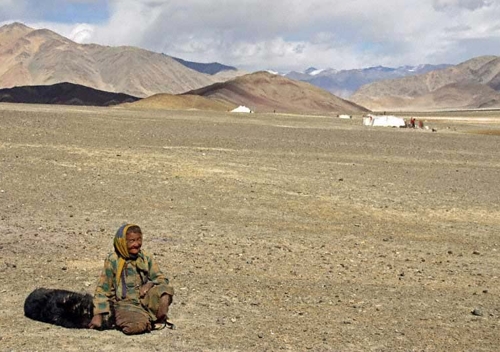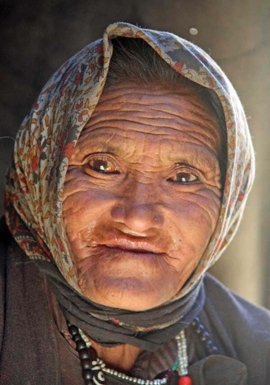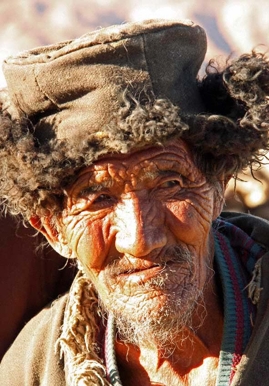
India's Nomads
"India's nomads are united by a history of poverty and exclusion that continues to this day: arguably the biggest human rights crisis you have never heard of."
John Lancaster, National Geographic, February 2010
VISIT GALLERY
Nomads of Changthang
The Changthang region is located approximately 300 kms south east from Leh, Ladakh on the north western plains of the Tibetan plateau in India.
Perched at an average elevation of 4,700 m, the Changthang (meaning Northern Plateau in Tibetan), is a high altitude desert. It is an impressionable landscape, one whose striking beauty, vast emptiness and unforgiving terrain will not vanish quickly from memory.
Muted brown mountains common to the Trans-Himalayan plateau contrast starkly with the white blanketed peaks separating mountain from sky.The ridges and valleys are tiger-striped with colours from a seemingly unnatural palette of dusty pinks, purples, emeralds and gold. Lush valley floors rich with grass lands and giant lakes extend to the vastness of open desert plains. Carcasses lying on a parched earth cracked open by the extremities serve as a reminder of the daily fight needed to survive in such an inhospitable terrain.
The Changthang is classified as a wildlife sanctuary and is home to many rare species of flora and fauna. Birds such as the black necked crane, the Kiang (wild ass) and the Tibetan gazelle, a species on the brink of extinction, are found in the region's high altitude plains.
The Changthang is also home to the Changpa, some of India's poorest nomads.
A harsh reality
Relocating approximately 8-10 times a year, the Changpa move with their goats and sheep in search of the wetlands of the lake basin in summer and to the lower plains in winter, when temperatures frequently drop below -30. Due to heavy snowfall, communities are often snowed in for up to 8 months a year.
The Changpa are nomadic pastoralists who originally migrated from Tibet in the 8th Century BC. They typically have no fixed address, mostly living in robos or tents made from yak wool which at times house up to 12 family members.
During the short summer months the sun beats fiercely on the higher plains. By contrast, winter is so brutally cold that families rarely venture outside. Conditions are extreme and life is tough.
Due to a lack of natural resources, families burn cow dung as fuel for heating lit with kerosene. A small metal stove sits as the centrepiece to the robo, its chimney poking out through the open hole in the roof which offers little protection against the elements. The carbon dioxide fumes let off from these stoves combined with a diet lacking in essential nutrients contribute to the poor health often experienced by many nomads.
Due to isolation and remoteness many Changpa have limited access to basis resources and infrastructure including health care or early childhood services. While the situation is rapidly improving, maternal health issues are still not uncommon with many children suffering from curable illnesses which in the past, have contributed to a high child mortality rate.
Source of income
The main source of income for the Changpa is derived from livestock. Basics such as grain, vegetables and cooking utensils are traded for meat, pashmina wool or milk and butter from goats and sheep which their families can do without.
However, many families Lille Fro supports lack the ability to derive an income from their herds. For families with a herd of less than 20 goats or sheep, their daily income is likely to equate to approximately 25-70 US cents a day, well within the World Bank's definition of 'extreme poverty' - less than $1.95US per day. Other families we have visited do not own any goats or sheep.
Restricted access
Much of the Changthang region is sealed off to foreigners due to its proximity to India’s disputed border areas.
In 2009 and again in 2012, Lille Fro was granted the rare privilege of visiting many communities in this region, travelling to some areas where no foreigners have ever been before.
With the help of local government and community we are hoping to support over 100 children from this region in the next 3 years through our child sponsorship program.
We have also finished building a greenhouse in remote villages which will provide families with much needed nutrition throughout the year.


